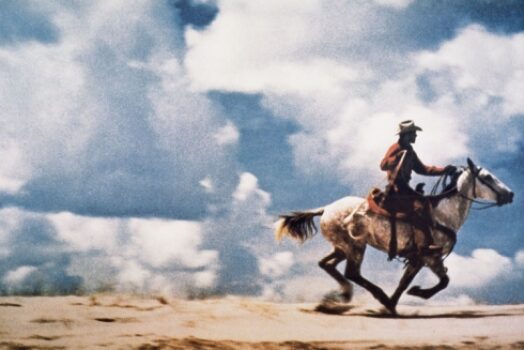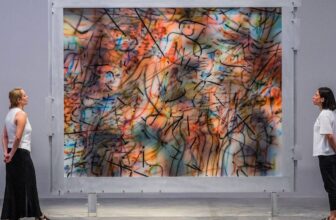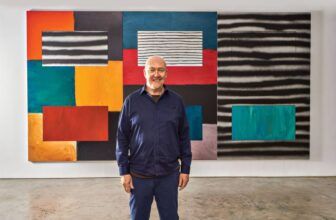What Is Richard Prince Known For
In the complex and often controversial world of contemporary art, few names spark debate and admiration like Richard Prince. Both a provocateur and a pioneer, Prince has spent decades challenging conventions, reshaping boundaries, and forcing critics and collectors alike to redefine what constitutes “original” art. With a body of work that spans photography, painting, mixed media, and digital art, Prince has etched his legacy into the history of postmodern art.
But who is Richard Prince? What makes his artwork so contentious, and so coveted? How does he create it? And how much does it cost to own a piece of his work today? Let’s take a journey through the life and legacy of one of America’s most enigmatic artists.
Born in 1949 in the Panama Canal Zone, Richard Prince was raised in a middle-class American family. After studying at Nasson College in Maine, he moved to New York City in the early 1970s, where he began working in the tear-sheet department of Time-Life magazines. This seemingly mundane job became the accidental seed for his life’s work.
Every day, Prince was surrounded by glossy advertisements, celebrity images, and fashion spreads. But what intrigued him most were the bits of paper left behind, advertising copy, photographs, promotional images that were no longer “useful.” It was here that Prince began cutting, pasting, and reimagining, inadvertently giving birth to what would become known as appropriation art.
Richard Prince is best known for being one of the forefathers of appropriation art, a controversial practice that involves taking existing images, often from popular culture or advertising, and re-contextualizing them as new artworks. His artistic philosophy is a direct challenge to traditional notions of originality, authorship, and intellectual property.
His most famous early works came in the form of rephotographed advertisements, particularly his series of Marlboro Men. Prince took photographs of cigarette ads, cropped them, and presented them as standalone works of art. By removing the branding and focusing solely on the image, Prince turned these familiar visuals into ambiguous, iconic meditations on masculinity, identity, and American culture.
The message was clear: in a world bombarded by media, the image itself has value, and perhaps even more so when stripped from its original context.
How Does Richard Prince Make His Artwork?
Prince’s process is simultaneously straightforward and radical. He typically begins with found imagery, photos from magazines, books, Instagram posts, advertisements, or even other artists’ work. He then appropriates these images through rephotographing, scanning, enlarging, printing, and sometimes painting over them. In many cases, he manipulates these appropriated images digitally or layers them with ironic text or pop-culture commentary.
His “Instagram Portraits” series is a good example of this process in action. Prince took screenshots of Instagram posts from random users and celebrities, added his own cryptic or sarcastic comment underneath, and then printed the entire image onto canvas. He exhibited and sold them as original artworks, drawing praise, ridicule, and legal threats all at once.
In some of his newer series, Prince incorporates inkjet printing, handwritten jokes, mixed media, and collage techniques. He enjoys playing with the surface of the image, challenging viewers to question what is real, what is fabricated, and what is worth valuing.
What Art Style Is Richard Prince Associated With?
Richard Prince is primarily associated with:
Appropriation Art
Postmodernism
Conceptual Art
He is part of a broader group of artists, such as Sherrie Levine, Barbara Kruger, and Jeff Koons, who emerged in the late 1970s and early 1980s, questioning authorship and originality in art. Prince’s work also carries strong Dadaist undertones, echoing the irreverence of Marcel Duchamp’s urinal piece, Fountain.
Moreover, Prince’s style can sometimes bleed into Abstract Expressionism or Neo-Expressionism, especially in his later, more painterly works. But his essence always comes back to one thing: the act of appropriation.
What Materials Does Richard Prince Use?
Prince is eclectic in his use of materials, often blending digital and analog techniques. His tools and mediums include:
Photographs (often rephotographed from magazines or social media)
Inkjet and pigment printing
Canvas and linen
Acrylic and oil paints
Handwritten text using Sharpies or markers
Collage materials
Books and paper ephemera
In his “Nurse Paintings” series, Prince used paperback covers of vintage romance novels, enlarged them, and painted over them with layers of acrylic. The final effect was haunting, seductive, and cinematic.
In contrast, his “Instagram Portraits” relied on digital screenshots and printing technology. Regardless of the tools, Prince consistently melds traditional materials with contemporary imagery to create something uniquely postmodern.
What Are Richard Prince’s Most Famous Artworks?
Richard Prince has produced hundreds of artworks across multiple series, but a few have risen to particular prominence:
1. Untitled (Cowboy) – 1989
Perhaps his most iconic image, this piece features a rephotographed image of the Marlboro Man. In 2005, it sold for over $1 million, making Prince the first photographer to break the million-dollar mark at auction.
2. Nurse Paintings (2002–2008)
This series, inspired by the covers of pulp romance novels featuring nurses, is a blend of mystery, eroticism, and grotesque beauty. One of the pieces from this series, Runaway Nurse, sold for $9.7 million at Christie’s in 2016.
3. Instagram Portraits (2014–2015)
This series featured screenshots of people’s Instagram selfies with Prince’s own cryptic comments added below. Though widely criticized as exploitative, they sold for up to $100,000 each, proving that Prince could still push boundaries in the digital age.
4. Joke Paintings
These works feature one-liner jokes, typed or handwritten, on canvas. They challenge the notion of visual aesthetics and force viewers to confront humor as art. They’re highly collectible and have sold for hundreds of thousands at auction.
How Many Artworks Does Richard Prince Have?
Estimating the exact number of artworks by Richard Prince is difficult due to the sheer variety and volume of his production. Over the past 40+ years, he has produced:
Over 1,000 photographic works
More than 400 paintings across multiple series
Dozens of books, artist zines, and prints
Countless mixed-media works and collaborative pieces
His major series include:
Cowboy Series
Nurse Paintings
Instagram Portraits
Joke Paintings
Girlfriend Paintings
Hippie Drawings
Check Paintings
Given his prolific output, the total number likely exceeds 2,000 works, many of which reside in museums, private collections, and galleries around the world.
How Much Does Richard Prince’s Artwork Cost?
Richard Prince’s artwork varies widely in price depending on size, medium, rarity, and provenance. Here’s a breakdown of typical market values:
Photographs (Cowboy series): $200,000 to $2 million
Nurse Paintings: $2 million to $10 million
Instagram Portraits: $50,000 to $100,000
Joke Paintings: $100,000 to $800,000
Drawings and Works on Paper: $20,000 to $100,000
Limited Edition Prints and Books: $1,000 to $25,000
Auction houses like Christie’s, Sotheby’s, and Phillips frequently feature his work in post-war and contemporary sales, where bidding is intense and prices often exceed estimates.
Collectors prize Prince for his cultural relevance, audacity, and ability to push the boundaries of legality and taste. Owning a Richard Prince artwork is more than a financial investment, it’s a statement about the role of media, identity, and ownership in contemporary life.
Where Can You See Richard Prince’s Artwork?
Richard Prince’s artworks are housed in some of the world’s most prestigious institutions, including:
Public Collections:
The Museum of Modern Art (MoMA), New York
The Whitney Museum of American Art, New York
Guggenheim Museum, New York
San Francisco Museum of Modern Art (SFMOMA)
Tate Modern, London
Los Angeles County Museum of Art (LACMA)
Centre Pompidou, Paris
Galleries:
Gagosian Gallery (Global)
Gladstone Gallery
Barbara Gladstone Gallery
Skarstedt Gallery
Private Installations & Online:
Many of Prince’s works reside in private collections, but several are available for public viewing through gallery exhibitions or online databases. His Instagram account (@richardprince4) also serves as a conceptual space for his digital experimentation and meta-commentary on social media.
The Legacy of a Rule Breaker
Richard Prince is not just an artist; he’s a cultural mirror. His work exposes the absurdity, beauty, and danger of a world saturated with images. By copying, altering, and re-presenting what already exists, Prince asks us to reconsider the very foundation of creativity.
Is he a thief or a genius? A provocateur or a philosopher? The answer might be all of the above. What’s undeniable is this: Richard Prince has permanently altered the DNA of contemporary art. In a time where the line between content and art grows ever thinner, his work remains both prescient and controversial.
Whether you admire him or detest him, you cannot ignore him. Richard Prince has earned his place, not only on gallery walls and auction blocks, but in the ongoing conversation about what art can and should be. image/guggenheim.org




